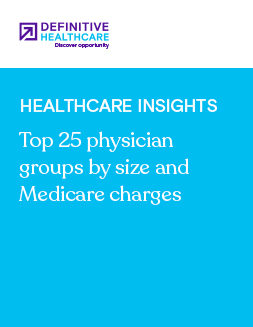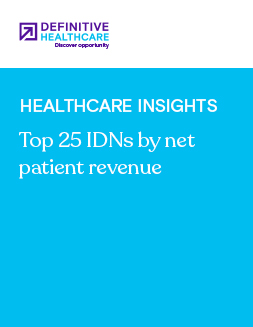Healthcare Insights
What is a hospital’s biggest expense?
Recent hospital financial trends show decreasing revenues and increasing expenses across facilities in the U.S. Many factors contribute to these trends, from supply chain disruptions to shifts in care settings.
This Healthcare Insight uses hospital financial data from the Definitive Healthcare HospitalView product to understand the biggest hospital expenses. Data is sourced from the Medicare Cost Report and aggregated from the most recent 12-month interval tracked in our database.
What is included in hospital operating expenses?
Hospital costs can be broken down into expenses that feature numerous line items, including but not limited to:
- Construction and renovation
- Food service
- Hospital salaries for doctors, healthcare providers, hospital executives, and support staff
- Hospital and medical equipment
- Medical and surgical supplies
- Patient medications
- Software and information technology solutions
The chart below shows the percentage of total hospital expenses by expense type. Not every expense type is broken out in the Medicare Cost Report and the numbers do not necessarily sum to 100%.
Hospital expense type as a percentage of total hospital expenses
Fig. 1. Data is from the Definitive Healthcare HospitalView product and sourced from Medicare Cost Report. Accessed November 2025.
What are the 3 biggest expenses for hospitals?
The biggest expense for hospitals is employee salaries. According to HospitalView data, on average, salary expenses are nearly one-third of total hospital operating expenses. The second highest expense for hospitals is medical/surgical supply costs, and the third is pharmacy supply costs.
Three of the top five hospital expenses are employee related – salaries, fringe benefits, and contract labor – and account for about 37% of a hospital’s operating expense, on average.
| Region | Average salary % | Average total med/surg % | Average benefits % | Average pharmacy costs % | Average contract labor % | Explore dataset |
|---|---|---|---|---|---|---|
| Midwest | 28.94% | 18.71% | 3.83% | 4.95% | 1.55% | Explore |
| Northeast | 33.43% | 15.13% | 7.20% | 7.18% | 1.76% | Explore |
| Southeast | 30.47% | 20.38% | 3.41% | 5.34% | 1.55% | Explore |
| Southwest | 27.80% | 18.90% | 3.53% | 4.37% | 1.25% | Explore |
| US Territories | 21.79% | 17.85% | 1.75% | 1.82% | 1.11% | Explore |
| West | 30.88% | 15.65% | 4.10% | 4.96% | 2.51% | Explore |
Fig. 2. Data is from the Definitive Healthcare HospitalView product and sourced from Medicare Cost Report. Accessed November 2025.
Do the biggest hospital expenses vary by region?
When reviewing the five biggest expenses for hospitals by region, most hospital costs break down similarly. Hospitals in the northeast region have slightly higher salaries and benefit expense percentages compared to the national average. Cities in the region, such as New York and Boston, have higher costs of living that can contribute to this difference.
Learn more
Healthcare Insights are developed with healthcare data and analytics from the Definitive Healthcare platform. Want even more insights or U.S. hospital lists? Start a free trial now and get access to the latest healthcare commercial intelligence on hospitals, physicians, and other healthcare providers.


